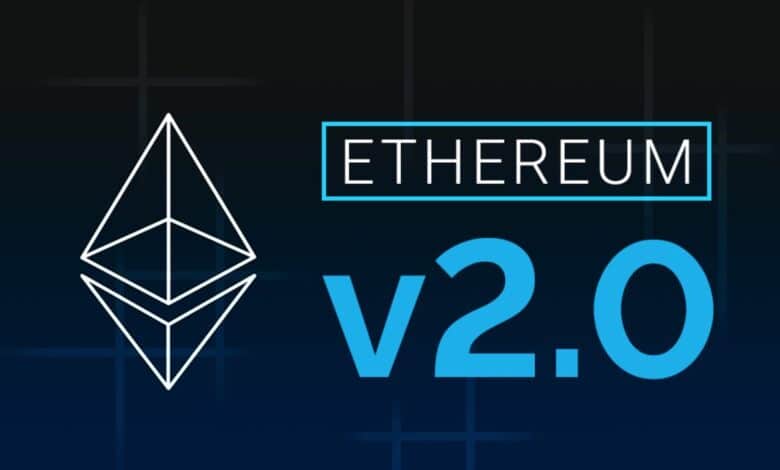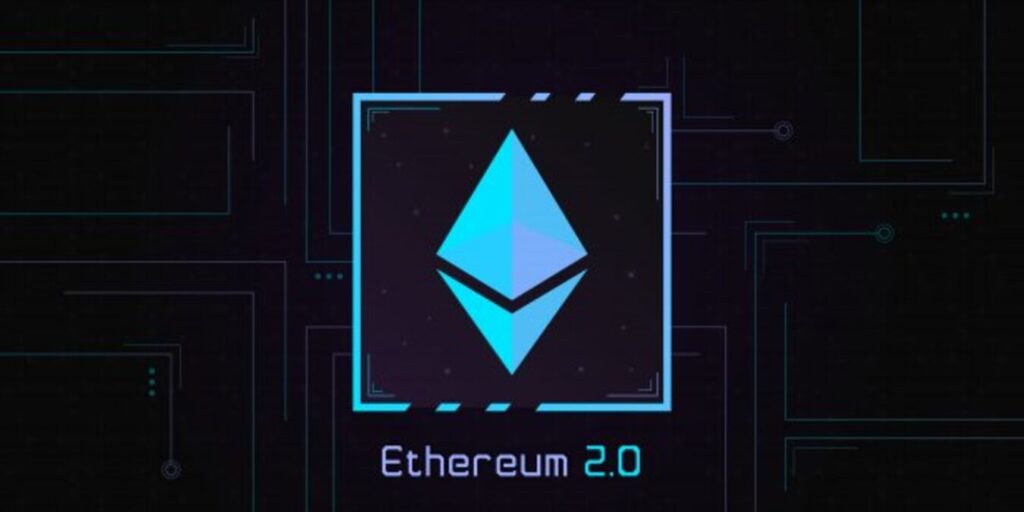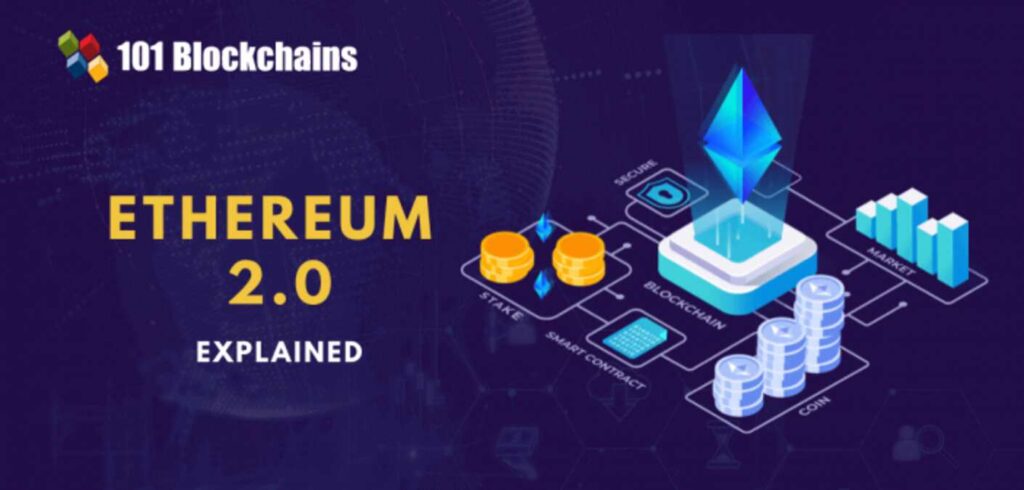Ethereum 2.0 Updates: The Best Powerful Future of Blockchain Evolution

Ethereum 2.0 Updates or Eth2, marks a significant evolution in the world of blockchain technology. With Ethereum being one of the most popular platforms for decentralized applications (dApps) and smart contracts, the introduction of Ethereum 2.0 promises to tackle longstanding issues such as scalability, security, and energy efficiency. In this article, we will discuss the critical updates that Ethereum 2.0 brings, explore how it differs from Ethereum 1.0, and explain the impact these changes have on the Ethereum ecosystem and the broader cryptocurrency market.
1. What Is Ethereum 2.0?
Ethereum 2.0, sometimes referred to as Eth2 or Serenity, is a major upgrade to the existing Ethereum blockchain aimed at improving scalability, security, and sustainability. This upgrade will allow Ethereum to handle a much larger number of transactions per second (TPS), making it a more viable platform for enterprise-level applications and mass adoption. Ethereum 2.0 shifts from a Proof-of-Work (PoW) to a Proof-of-Stake (PoS) consensus mechanism, significantly reducing the energy required to validate transactions.
2. Key Features of Ethereum 2.0
2.1 Proof-of-Stake (PoS) Consensus Mechanism
In Ethereum 1.0, miners solve complex mathematical problems to validate transactions—a process known as Proof of Work (PoW). Ethereum 2.0, however, replaces PoW with Proof of Stake (PoS). In PoS, validators are chosen based on the amount of Ether (ETH) they hold and are willing to “stake” as collateral. This approach reduces energy consumption by over 99% and incentivizes users to maintain network security.

2.2 Shard Chains for Enhanced Scalability
One of the main updates in Ethereum 2.0 is the implementation of shard chains. The current Ethereum blockchain processes transactions in a single chain, which creates congestion and slows down transaction speeds. Sharding divides the network into smaller, interconnected chains (shards), allowing for parallel processing of transactions. With sharding, Ethereum 2.0 can handle thousands of TPS, compared to just 15-30 TPS on Ethereum 1.0.
2.3 The Beacon Chain: A Coordination Mechanism
The Beacon Chain is a new component in Ethereum 2.0 that coordinates and then manages validators across the network. It acts as the central chain that ensures all shard chains stay synchronized. Launched in December 2020, the Beacon Chain plays a crucial role in maintaining network consensus and then sets the stage for future upgrades.
3. The Phases of Ethereum 2.0 Development
Ethereum 2.0 is being rolled out in multiple phases to ensure the stability and then security of the network during the upgrade process. Here’s a look at each phase:
3.1 Phase 0: Launch of the Beacon Chain
Phase 0, which went live in December 2020, introduced the Beacon Chain, laying the foundation for Ethereum’s shift to PoS. This phase did not impact Ethereum 1.0 directly but allowed the network to begin recruiting validators.
3.2 Phase 1: Introduction of Shard Chains
In Phase 1, Ethereum 2.0 introduces shard chains to increase network capacity. This phase is expected to boost transaction speeds and then reduce costs significantly, paving the way for a highly scalable blockchain infrastructure.
3.3 Phase 1.5: The Merge
The Merge is a critical step that will transition Ethereum 1.0 from PoW to PoS by merging the existing Ethereum mainnet with the Beacon Chain. This phase ensures a seamless transition while preserving Ethereum’s transaction history and then user assets.
3.4 Phase 2: Full Implementation of Shard Chains and dApp Compatibility
The final phase will see the full implementation of shard chains and then introduce dApp compatibility across shards. This phase aims to complete Ethereum’s transformation into a highly efficient and then scalable network capable of supporting large-scale applications and then widespread adoption.
4. Why Ethereum 2.0 Matters for the Cryptocurrency Ecosystem
4.1 Enhanced Scalability for dApps
Ethereum 2.0’s improved scalability enables developers to create dApps that can cater to millions of users without the risk of network congestion. The enhanced throughput allows for lower transaction fees, which is crucial for applications like DeFi (Decentralized Finance) and then NFT (Non-Fungible Token) platforms.
4.2 Improved Security and Decentralization
While PoS may appear less secure than PoW on the surface, Ethereum 2.0 incorporates mechanisms to prevent validator collusion and maintain decentralization. By making staking more accessible, Ethereum 2.0 encourages more users to participate in securing the network, leading to a more robust ecosystem.
4.3 Environmental Impact
The energy-efficient PoS model drastically reduces Ethereum’s carbon footprint. With environmental concerns becoming a significant consideration for investors and then developers, Ethereum 2.0’s PoS consensus is a step towards a greener blockchain, making it more attractive to eco-conscious investors.
5. How to Participate in Ethereum 2.0: Becoming a Validator

To support the Ethereum 2.0 network, users can become validators by staking at least 32 ETH. Validators are rewarded for processing transactions and then keeping the network secure, but they must also abide by specific rules to avoid penalties. While staking requires a considerable investment, it provides a stable return through transaction fees and then rewards, making it an attractive option for long-term investors.
6. Ethereum 2.0’s Impact on the Broader Blockchain Industry
6.1 Competitive Landscape
With Ethereum 2.0, Ethereum strengthens its position against emerging competitors like Polkadot, Cardano, and then Solana, all of which offer scalable PoS networks. The upgrade ensures Ethereum remains a dominant force, benefiting from a strong developer community and then extensive dApp ecosystem.
6.2 Implications for Ether (ETH) as an Investment
The transition to Ethereum 2.0 has the potential to increase ETH’s value by making it deflationary, with fewer new coins entering circulation. This, combined with the growing demand for staking, could lead to a supply squeeze, making ETH an attractive asset for investors.
6.3 Driving Blockchain Adoption in Enterprises
With Ethereum 2.0’s enhanced performance, more businesses are likely to adopt blockchain for supply chain management, finance, and then identity verification. The improved scalability, security, and then environmental sustainability position Ethereum as a blockchain platform suitable for large-scale commercial applications.
7. Challenges and Potential Roadblocks for Ethereum 2.0
While Ethereum 2.0 promises significant advancements, there are some challenges to consider:
- Implementation Complexity: The multi-phase upgrade requires meticulous planning and then execution, and any disruption could impact network stability.
- Transition Risks: The transition from PoW to PoS may present security challenges if validators do not act in good faith.
- Regulatory Uncertainty: Governments worldwide are still determining how to regulate staking-based networks, which could impact Ethereum’s global adoption.
Conclusion: The Future of Ethereum with Ethereum 2.0
Ethereum 2.0 is poised to bring transformative changes to the blockchain industry, addressing many of Ethereum’s current limitations while setting the stage for widespread adoption. The transition to PoS, introduction of shard chains, and then deployment of the Beacon Chain reflect Ethereum’s commitment to innovation, scalability, and then security. As Ethereum 2.0 progresses through its various phases, it will solidify its status as the leading platform for decentralized applications, potentially redefining the cryptocurrency landscape.
Read more: Crypto Tax Calculator





